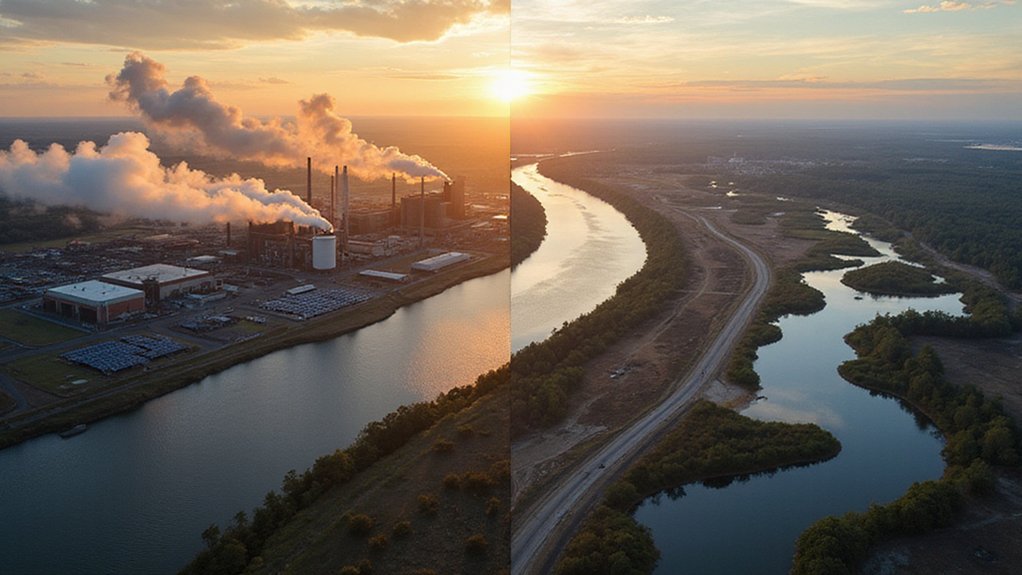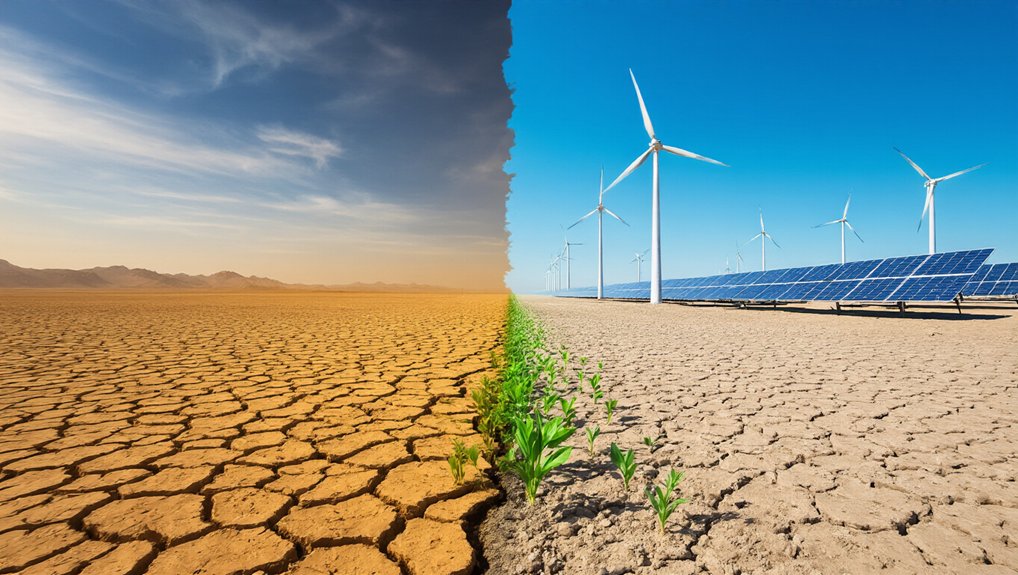Earth Day started small in 1970 but packed a serious punch. What began as a protest led directly to the EPA’s creation and vital legislation like the Clean Air Act. It went global, inspiring international climate agreements and normalizing green practices from recycling to renewable energy jobs. Sure, challenges remain—corporate greenwashing is still a thing. But Earth Day‘s evolution from demonstration to worldwide movement shows its lasting environmental impact.

What began as a modest demonstration has transformed American policy forever. Back in 1970, Senator Gaylord Nelson and activist Denis Hayes gathered 20 million Americans for the first Earth Day. Pretty impressive turnout. They weren’t just tree-hugging for fun – they were responding to disasters like the Santa Barbara oil spill that had folks genuinely worried about their planet. Smart timing too, scheduled between spring break and finals when students could actually show up.
The impact? Massive. Earth Day directly sparked the creation of the EPA that same year. Not bad for a single day of protest. The Clean Air Act followed in 1970, with the Clean Water Act and Endangered Species Act hot on its heels. The 1970s became a goldmine of environmental legislation. Politicians from both parties actually agreed on something for once.
Earth Day’s influence didn’t stop at America’s borders. The movement helped set the stage for global agreements like the Kyoto Protocol and Paris Climate Accord. Today, more than 190 countries participate. That’s a lot of people picking up trash and planting trees.
Has it changed how we live? Absolutely. Recycling went from fringe hobby to mainstream habit. Companies started making “eco-friendly” products because consumers demanded it. Energy efficiency became cool. Community cleanups became normal weekend activities. The shift toward sustainability has created numerous green energy jobs in sectors ranging from solar installation to wind turbine maintenance. Leading corporations like Apple have committed to achieving carbon neutrality for all their products by 2030. Even businesses jumped on the bandwagon with their fancy ESG practices.
But it’s not all sunshine and composted roses. Critics point out the hypocrisy of companies “greenwashing” their image while continuing harmful practices. One day of awareness can’t offset rising global emissions. And developing countries still face enormous environmental challenges without resources to address them.
Earth Day continually evolves its focus – in 2024, it took aim at plastic pollution with the “Planet vs. Plastics” theme. The initiative seeks a 60% reduction in plastic production by 2040, addressing the environmental degradation caused by single-use plastics. Fifty-four years later, what started as a protest has become a powerful catalyst for environmental policy worldwide. Not too shabby for a single day in April.









